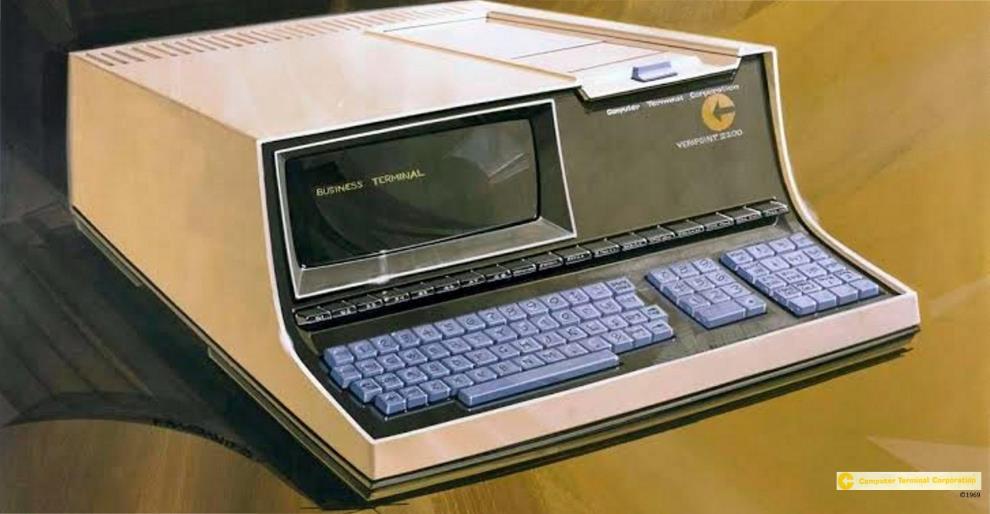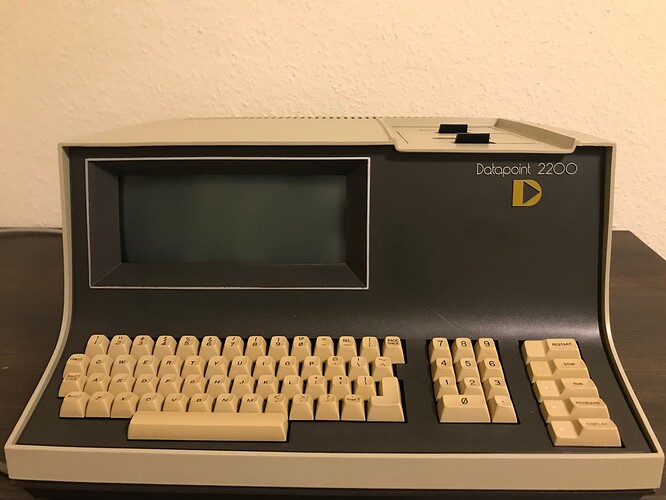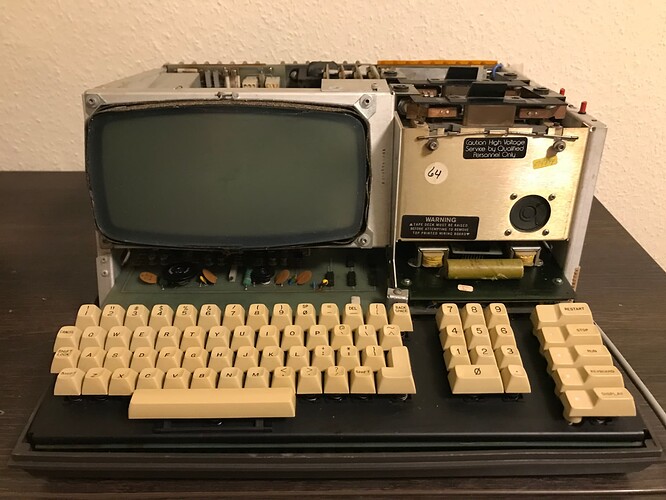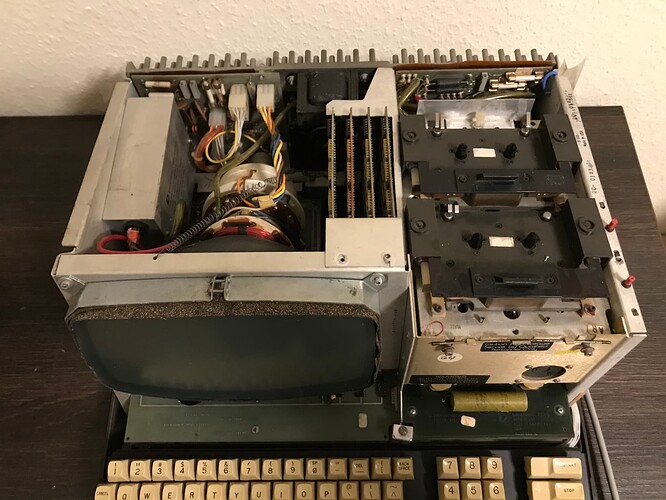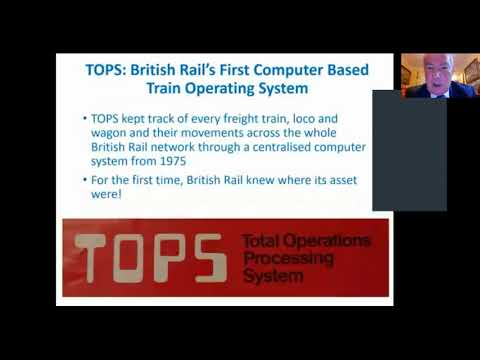Continuing the discussion from ADDS Envoy Traveling Terminals:
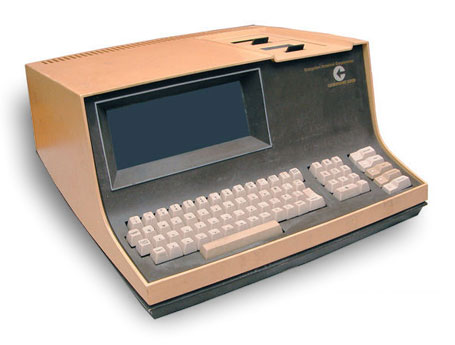
That terminal reminded me of the Datapoint 2200. This “terminal” was actually a computer in disguise. The processor was a TTL equivalent of a serial version of the 8008. Intel developed the 8008 under contract to Datapoint, but failed to meet the deadline. The bit-serial TTL version was faster, anyway.
I personally think this “terminal,” which could be and was used as a computer, could lay claim to being the first “personal” computer, although too expensive for most individuals.
There’s some interesting history, and differing accounts, of this pivotal transaction. Here’s Ken Shirriff with one of his highly detailed write-ups:
Datapoint met with Intel in December 1969, and what happened next depends on whether you listen to Intel or Datapoint.
Nowadays, we think of MOS chips as high-performance and building a CPU out of TTL chips seems slow and backwards. However, in 1970, TTL logic was much faster than MOS. Even operating one bit at a time as a serial computer, the Datapoint 2200 performed considerably faster than the 8008 chip.
A Texas Instruments salesman learned that Intel was building a processor for Datapoint and asked if Texas Instruments could build them one too. Datapoint gave TI the specifications and told them to go ahead.
Recommended reading (seriously recommended): “Datapoint – The Lost Story of the Texans Who Invented the Personal Computer Revolution” by Lamont Wood
Some interesting facts: The Datapoint 2200 introduced the common 80 columns format. After their first success with a drop-in replacement for the ASR 33 TeleType (featuring same dimensions and cable connections), Datapoint (then the Control Terminal Corporation) originally planned a similar coup with the 2200 as a drop-in replacement for key punches, hence the 80 columns at 12 lines screen, replicating the punchcard (in the footprint of the IBM Selectric). The screen dimensions stuck, even as the specifations outgrew the initial ideas. (Reportedly, the machine was loved for its low profile. Another selling point of the Datapoint terminals was a keyboard with rollover, suitable for typing.)
Famously, the Intel 8008 is a Datapoint 2200 processor on-a-chip as commissioned by Datapoint to 3 different fabs (Intel, Fairchild and TI). Since the chip didn’t deliver the performance, the contract was canceled with rights remaining at Intel. The rest is history and we’re all running our computations on the direct descendants of this 1970 terminal. Most interestingly, Datapoint managed to stay ahead of microprocessors with their homegrown multiboard processors until the late 1980s or so.
The original design drawing featured a blinkenlights console like row of toggle switches below the screen (presumably advertising the computational capabilities), which was soon dropped:
(Image source: http://vintagecomputers.zohosites.com/datapoint-2200.html)
And here’s a video showing the DP 2200 terminal and its internals (sadly, the aspect ratio is distorted when watching this on YouTube, while the embedded version is fine):
I still own a 1971 Datapoint 2200. Anyone interested?
Welcome, @AMJ ! I’m afraid I’m not in the market, but I hope you find a good home for it. Must be quite a rare item.
Hi @AMJ ,
My father had a Datapoint 2200. I would certainly be interested. Where are you based?
David.
Thanks @AMJ , I’m in the UK. I remember how heavy the Datapoint is. Hopefully you can find a good home for the computer in the Netherlands!
Very nice! Only a successful sale will tell you what it’s worth - a valuer could help, for insurance purposes, or an auction house, if you plan to sell. I would imagine it’s worth a fair bit, personally, but it all depends on the buyer.
Probably not $48,000 which is the price I see on eBay right now.
Notably, that’s a zero-bids starting price: sometimes we seen the same items re-placed at various starting prices in a kind of iterated Dutch auction. Until there’s a seller, it’s not really an indication of value. (Although it is an indication of price - it’s what you’d pay if you needed one today, you could afford it, and there are no other ways to get one.)
I’ll post a link because someone might want to take a copy of the large-format images.
It is not even a DP2200 : it is a DP1100, converted to a DP2200. It is thus missing the 8" floppy drives that should go with it. It would be very interesting to save the software : I see “Diag DP5500” and “CTOS 2.2” in between the casettes…
48K USD ? I paid 500 USD for my DP1100, including the 4 8" floppydrives… It broke down just a few days ago, wen the mains rectifiers shorted out. I see the machine on offer has experienced the exact same problem…
I guess, rarety varies with location – and ebay prices are probably for the unlucky ones. E.g., probably what I would have to pay in case, I wanted one desperately. On the other hand, these shouldn’t be too uncommon in other places. E.g., there should be some in the UK, where DP2200s were used in numbers by British Rail in local TOPS stations. (They served as a drop-in replacement for punch card equipment used in early phases of the system. Which I deem quite remarkable, since this was the original idea behind the design of the terminal and its form factor, but doesn’t seem to have played a prominent role in the marketing of the eventual product.)
Here’s a first-person account:
The British Rail TOPS software system for controlling the wagon and loco fleet
In case you wondered, TOPS stands for Total Operations Processing System and was developed for managing rolling stock on railways (there are also off-springs for managing other kind of traffic). It’s where the class system for British locomotives comes from.
Here’s a nice talk on TOPS – originally a project by the Southern Pacific and IBM in the US – and its large scale British adoption:
A system design report from 1962 of the original US TOPS system in its early stages can be found on Bitsavers: http://www.bitsavers.org/pdf/ibm/tops/TOPS_SystemDesignReport_Mar62.pdf
(What the DP2200 replaced was essentially the “operating I/O unit” for yard offices, found in figure 2-3 on page 2-15 of this report.)
(I’ve been planning to do a blog post on this for ages.)
On popular demand, here’s an alternative version of the same talk with more readable slides in the video:
Hmm that link isn’t working for me but perhaps this is the same short film:
The 1975 short film “Bits Bytes and Bauds” makes a brief showing in that presentation - you can watch it in full here on Sam Hallas’ site. You’ll see the inside of a 2200. (Also there, the short film “Direct Link - A new way to Communicate” about digital communications in the British Rail network.)
